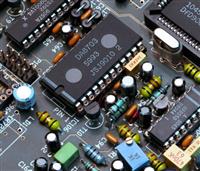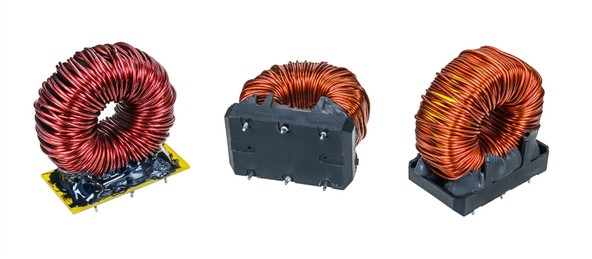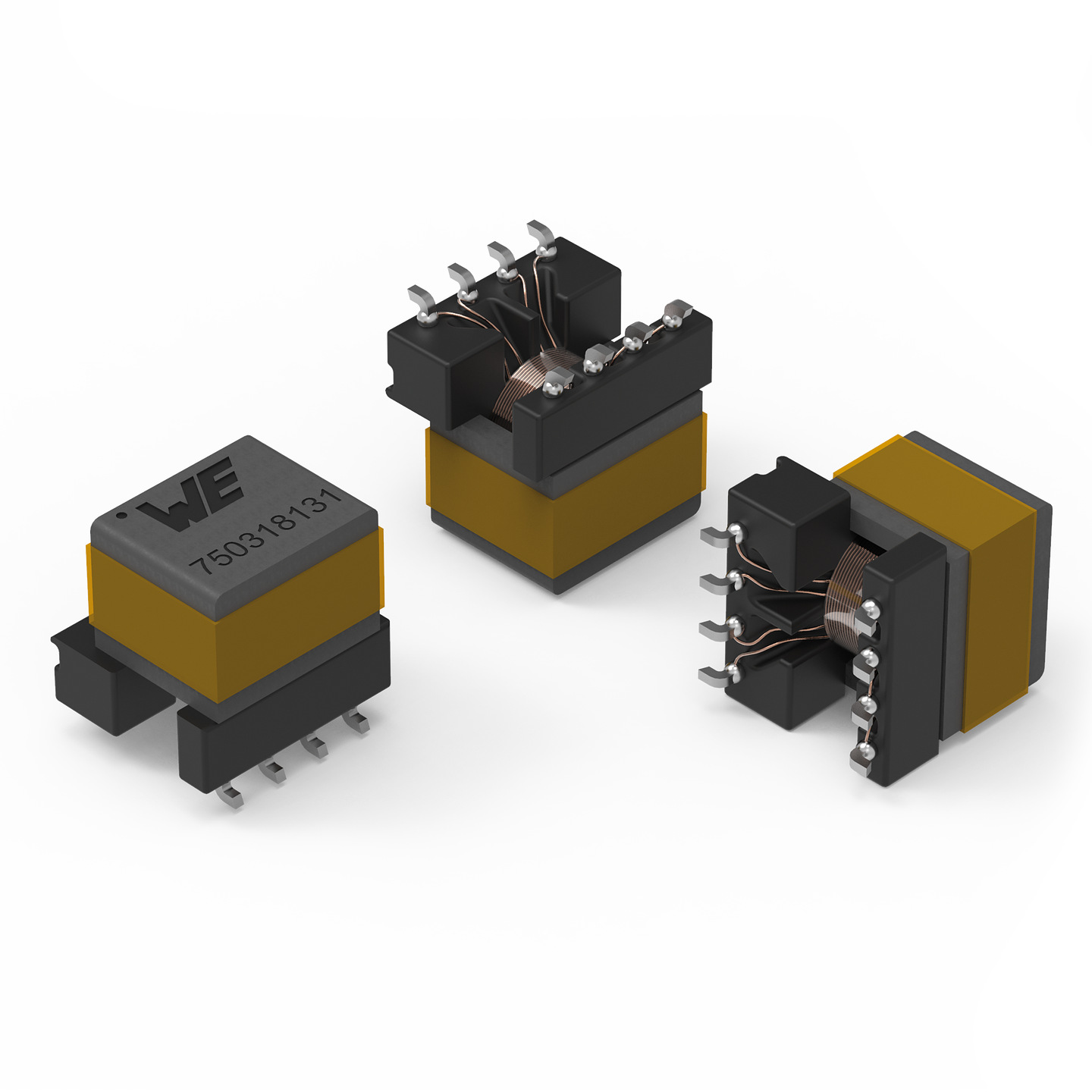
Transformers (T)
Transformers can transfer electrical energy from one circuit to another, with an increase or decrease in voltage. It consists of an iron core (or magnetic core) with two or more coils of wire wound around it. The wire wound connected to the power supply is the primary coil, while the remaining wounds are called secondary coils, through which the electrical energy can flow.
The working principle of transformers lies in Faraday’s electromagnetic induction law. When the AC voltage is applied to the primary coil of the transformer, the current flowing through will generate an alternating magnetic flux in the iron core so that the primary coil and the secondary coil are electromagnetically connected. According to the principle of electromagnetic induction law, the alternating magnetic flux will induce an electromotive force through the two coils, and its magnitude is proportional to the number of coil turns and the maximum value of the main magnetic flux.
In a circuit, transformers are mainly used for the following purposes: voltage transformation, current transformation, impedance transformation, isolation, voltage regulation (magnetic saturation transformer), etc.


- Comments(5)
R****Kja
Jun 15.2024, 19:55:30
a****jen
May 09.2024, 17:41:44
F****rea
Mar 28.2024, 10:02:50
D****cis
Feb 20.2024, 01:03:35
M****las
Jan 10.2024, 12:43:44
This explanation of transformers was super insightful, even for someone like me who gets lost in tech jargon easily. I never knew these mysterious boxes buzzing by the outlets in our homes were capable of such cool electrical gymnastics! house of hazards: the only game where making coffee and checking the mail can turn into a death-defying adventure. ?? This one-of-a-kind co-op experience is pure joy, with its mix of quirky challenges, unpredictable hazards, and plenty of room for friendly (or not-so-friendly) competition.

